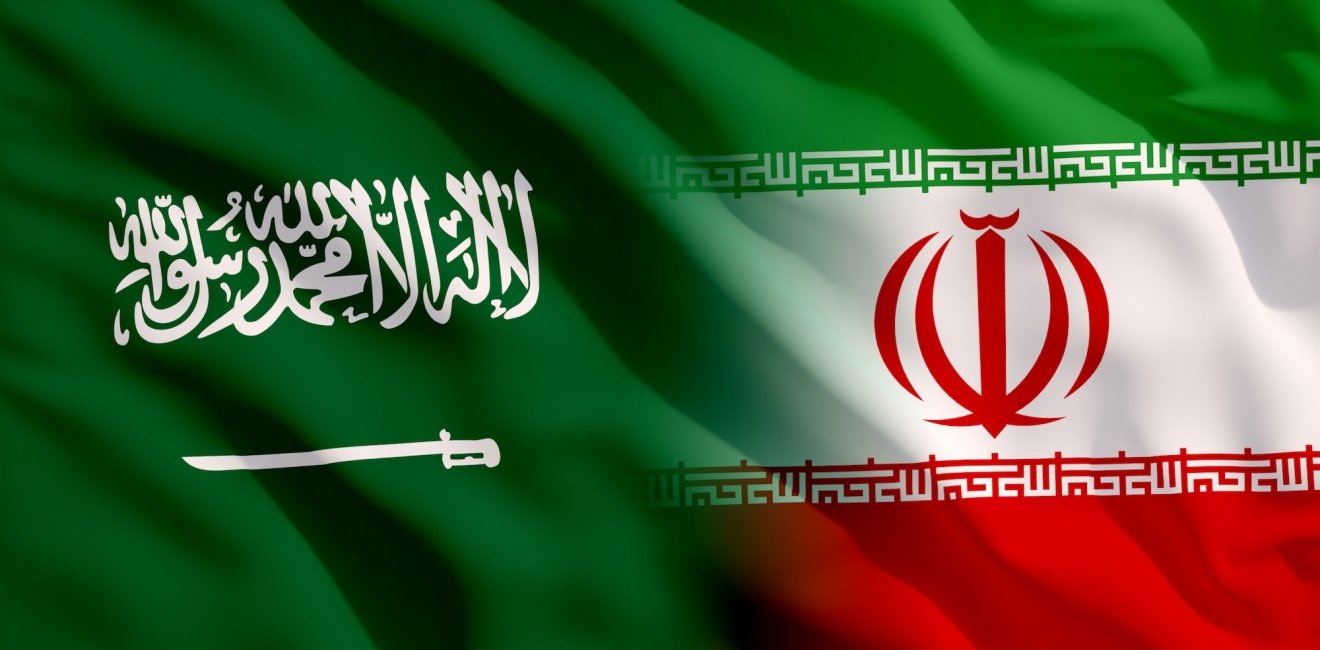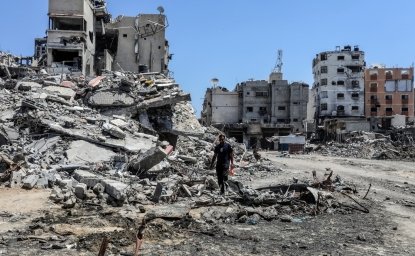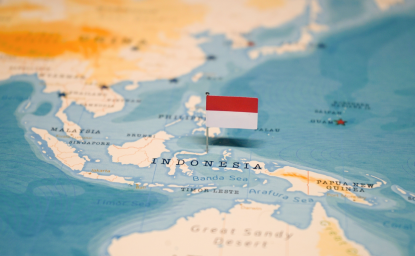One year ago, on March 10, Saudi Arabia and Iran agreed to renew diplomatic relations after a seven-year rupture and pledged to open up a new era of cooperation in their stormy rivalry for primacy in the Persian Gulf. They have exchanged ambassadors, re-opened their embassies, and held numerous high-level meetings capped off by President Ebrahim Raisi’s visit to Riyadh in November, the first Iranian of his rank to visit Riyadh in eleven years.
The tone of their relationship has changed considerably from outright antagonistic to extremely cautious. They have also both worked to avoid an escalation of the Israel-Hamas war into a regional conflict that attacks on Red Sea commercial shipping by Iranian-backed Houthi rebels in Yemen threatened to do, as well as upsetting fragile peace talks with Saudi Arabia to end the nine-year-old Yemeni civil war.
Diplomatic renewal?
For all these initial diplomatic achievements, Saudi Arabia and Iran have yet to sign, let alone implement, any agreement of substance in any area other than diplomacy. Their foreign, finance, and economic ministers have held numerous meetings to revive their 1998 General Agreement for Cooperation in all areas aside from security, as well as their 2001 Security Cooperation Agreement. So far, however, no new life has been breathed into it either.
To the contrary, they have found new and old issues over which to haggle, serving as a constant reminder of what continues to keep them far apart. At an emergency summit of the 57-member Organization of Islamic Cooperation and Arab League held in Riyadh on November 12, Saudi Arabia fended off Iranian efforts to mobilize military support for Hamas in its war with Israel and pressure the six Arab states that now have diplomatic ties with the Jewish state—Egypt, Jordan, the United Arab Emirates, Bahrain, Sudan, and Morocco—to cut them.
Iranian President Raisi and Saudi Crown Prince Mohammed bin Salman (MBS), the kingdom’s de facto ruler, made history by meeting during the summit to discuss various possible areas for cooperation, including Saudi investment in Iran’s sanctions-hobbled economy. Saudi Finance Minister Mohammed al-Jadan once declared that this could happen “very quickly.” But MBS reportedly told Raisi that Iran would have to rein in the activities of its regional Arab allies and proxies as the quid pro quo for any Saudi financial or economic aid.
Saudi Arabia has also sent other signals of its continuing displeasure with Iranian behavior in the wake of their normalization accord.
Saudi Arabia has also sent other signals of its continuing displeasure with Iranian behavior in the wake of their normalization accord. For example, their respective religious officials reached an agreement in January to allow Iranians to return to Mecca to perform the Umrah pilgrimage to Islam’s holiest site after a seven-year Saudi ban. Then, in mid-February, Tehran announced the cancellation of the plan for the first 30,000 Iranians to go due to “technical disagreements” over flight permits. Neither side has explained what this meant or when the problem might be resolved to allow Iranian pilgrims back.
Regional disputes
Meanwhile, an old dispute between Iran and Kuwait over the Dorra oil and gas field in the northern Gulf has flared up again, with Saudi Arabia and its Arab ally Kuwait refusing to recognize Iranian claims to a 40 percent stake in the deposit. In July, Saudi Arabia declared that it and Kuwait together had “full rights” over the entire field, a position strongly endorsed by all six Gulf Arab monarchies of the Gulf at their last summit in December.
As a result, analysts scouring the political landscape for signs of a shift in Iran’s policies, specifically of the Iranian-Saudi normalization accord, have had a hard time finding any. The main two hot spots threatening to upend the new Saudi-Iranian relationship remain, first and foremost, Yemen and Lebanon.
The rebel Houthi government based in the capital, Sanaa, continues to fire Iranian-provided missiles and drones at commercial ships plying the Red Sea to show its support for Hamas in its war with Israel. However, collateral damage is also being inflicted on Saudi Arabia’s master plan to develop a non-oil-based economy focused in large part on the Red Sea. The plan includes launching a new tourist industry there, including three luxury resorts and a cruise ship business, as well as building an entirely new $500 billion ultra-modern city.
There is no sign so far that Iran has done anything to pressure the Houthis into halting their attacks on Red Sea international shipping. The Houthi government has denied any Iranian interference and offered assurances it does not intend to expand the conflict beyond its support for Hamas against Israel. For its part, Saudi Arabia has carefully avoided jeopardizing its peace talks with the Houthis by refusing to join the US-led Red Sea Task Force set up to counter Houthi attacks on shipping there.
In Lebanon, Iran’s ally Hezbollah continues to trade artillery fire with Israel across the border. Israeli Prime Minister Benjamin Netanyahu threatens almost daily to launch a full-scale invasion to push Hezbollah back from the border and create a buffer zone there. Hezbollah, in turn, threatens to loose full-scale barrages of its Iranian-provided missiles capable of reaching almost all of Israel. Iran is reportedly counseling Hezbollah to avoid an escalation out of concern a regional war will lead to Israel and the United States attacking it directly, not out of fear of upsetting its budding detente with Saudi Arabia.
The Saudis view Lebanon as another test case of Iranian willingness to improve relations with them by accepting a new president not beholden to Tehran.
The Saudis view Lebanon as another test case of Iranian willingness to improve relations with them by accepting a new president not beholden to Tehran. That hapless country has been without a functioning government for the last fifteen months because it has been unable to elect what its sectarian-based constitution states must be a Maronite Christian. Hezbollah’s candidate backed by Iran is Suleiman Franjieh, 58, who does not have enough votes in parliament to get elected. Neither does the opposition candidate, a senior International Monetary Fund technocrat, Jihad Azour, 57. The Saudis have hinted they are ready for a compromise, but there is no sign that Hezbollah or Iran are.
Many fires are burning across the Middle East landscape, and both Saudi Arabia and Iran share a fear of escalation that could burn them as well. However, their allies and interests remain in constant conflict, making it difficult to perceive how their normalization of diplomatic relations will birth any substantive détente anytime soon.
The views expressed in these articles are those of the author and do not reflect an official position of the Wilson Center.






